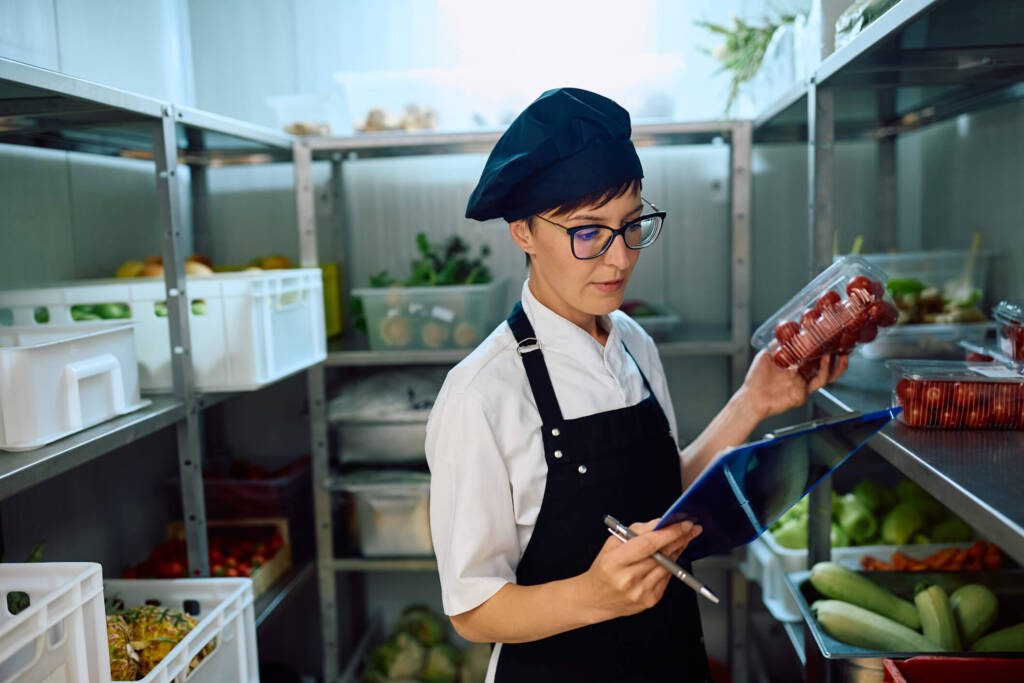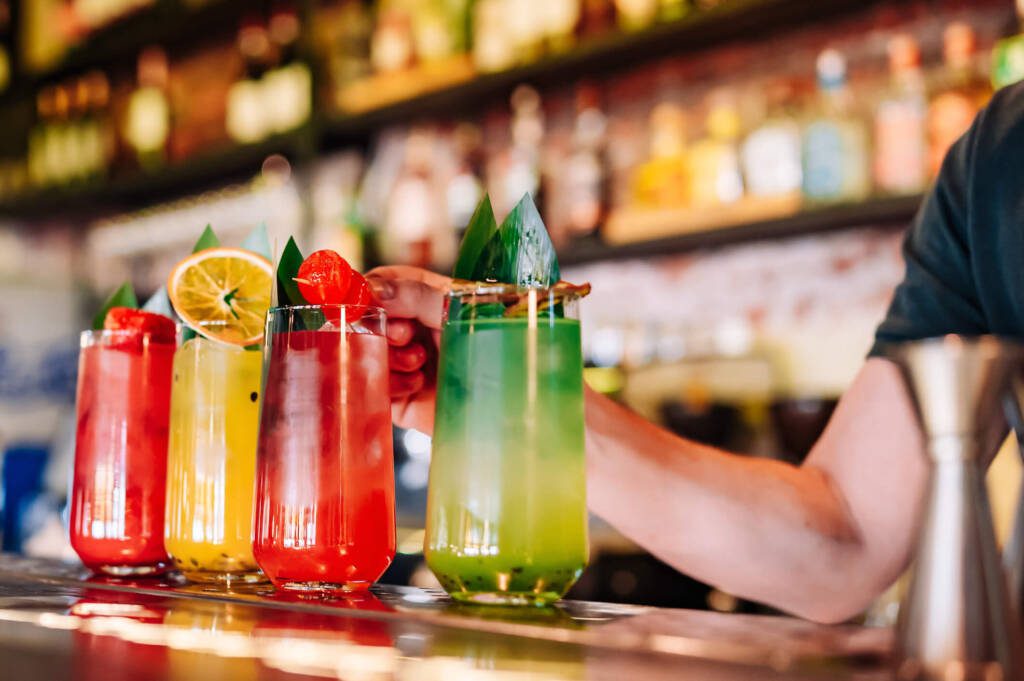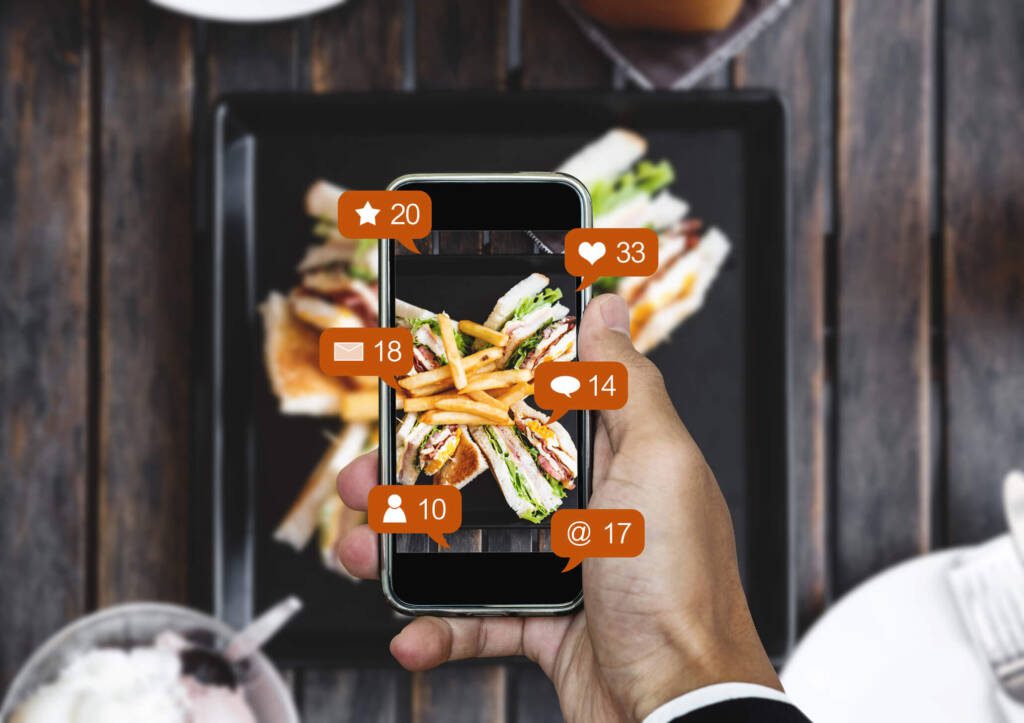Staying ahead in the restaurant industry takes insight and adaptability, but the right strategies can set up restaurants for long-term success. By embracing the latest restaurant industry trends, restaurants can be competitive and thrive.
It can be difficult to keep up with all the latest trends while running a successful restaurant. To help, we’ve gathered the top 10 current trends in the restaurant industry, so that you can easily learn about them and implement the ones that work for your business.

Experience And Value Matter More Than Price
Understanding restaurant consumer trends is essential to thriving in a continually evolving market. Since the change in consumer habits during and following the COVID-19 pandemic and the rising costs of goods and services over the past few years, restaurant goers are pickier about where they eat. They are often looking for a unique experience.
This is part of the reason why so many casual chain restaurants like Applebee’s and T.G.I.Fridays have closed many of their locations. Consumers are prioritizing dining experiences and overall value above low prices. Restaurants aiming to build customer loyalty should think about what unique value they bring to the market. Why should consumers choose to dine at a restaurant versus the many other options? Promote restaurant experiences in marketing materials to demonstrate its value to potential customers.

Emphasis On Sustainability
Current trends in the restaurant industry are leaning green. Restaurants are focusing on eco-friendly practices like reducing food waste and using recyclable packaging. This trend resonates with environmentally conscious diners. One study found that 75% of consumers in the U.S. would be more likely to visit a restaurant that uses eco-friendly business practices than one that doesn’t.
Emphasize sustainability in a restaurant with strategies like:
- Minimizing food waste through the creative use of ingredients and portion control
- Offering more vegetarian and vegan menu items
- Implementing efficient dishwashing techniques and low-flow sinks to save water
- Reducing energy consumption by switching to high-efficiency appliances and lights
- Replacing single-serve condiments with bulk
- Switching to reusable or recyclable plates, cutlery, and take-out containers
A report from the National Restaurant Association states that more than 60% of consumers are open to paying more for a product with sustainable packaging. Sustainability is appealing to modern consumers, and it can save money by reducing waste and utility use and increasing the value of a restaurant.

Integration Of Technology To Increase Efficiency
Restaurant trends mirror the competitive nature of the industry, and one trend that’s essential to follow is the latest technological advances that can improve efficiency and value. Adopting technologies like automation, AI-powered ordering, kitchen display systems, and real-time analytics to streamline operations can help save time and money. In fact, failing to leverage restaurant technology well is one of the common reasons why restaurants fail.
Technology trends for restaurants:
- Leveraging AI: Ask an AI chatbot for ideas on how to make a restaurant more sustainable and new menu items to try. It may even be able to analyze industry trends and data in order to predict future restaurant trends.
- All-in-one cash management solutions: Modern cash management systems are highly accurate and secure, making it easier than ever to track finances even across multiple locations.
- Automating tasks: Look for cash management software that automates repetitive tasks like order display, organizing and tracking, and inventory management.
- Tableside technology: QR codes or devices like tablets at each table enable customers to view the menu and even place orders as soon as they are ready without any labor costs for the restaurant.
See how ICL’s restaurant cash management solution can help you simplify operations and increase cash handling efficiency across every location.

Local Ingredients
The theme of sustainability underlines many of the current trends in the restaurant industry, including this one. Using local produce, dairy, and meat whenever possible satisfies consumer preferences for freshness and may improve a menu’s quality. It also helps reduce a restaurant’s carbon footprint and saves money on transportation costs.
Buying local offers restaurants a chance to support community businesses. Caring about the local economy highlights a restaurant’s values, which could increase consumer trust and loyalty. A recent poll found that 82% of consumers want to support businesses whose values align with their own. Customers may even be willing to pay more for local ingredients.

Seasonal Menus And Limited Food Items
Rotating seasonal menus and smaller, curated offerings add value to a restaurant, which will attract the restaurant goers of today. Research from Technomic shows that 59% of consumers are more likely to choose a menu item that is labeled seasonal than one that isn’t.
Benefits of seasonal and limited menus:
- Create excitement
- Make the most of local ingredients
- Help ensure freshness
- Gain more flexibility to accommodate specific dietary preferences and restrictions
- Provide healthy options

Convenient Ordering And Payments
Mobile ordering, QR codes, self-serve kiosks, and contactless payments are becoming standard in modern restaurants. These technologies increase transaction speed and security while reducing the need for labor. For busy restaurants, consider implementing an online reservation system. Allowing customers to book tables ahead of time can reduce wait times and help optimize labor costs.
Cash management solutions like CashSimple® help restaurants efficiently handle cash transactions by simplifying change orders, cash deposits, and cash report generation. Effective cash management can save money and time, freeing management up to focus on other tasks. A case study of restaurants using ICL’s cash management solution found that every restaurant saw labor savings of about two hours daily because managers didn’t need to spend time preparing deposits or making trips to the bank.
Explore best practices for restaurant cash handling procedures to streamline transactions and enhance security at every step.

Non-Alcoholic Beverages
Young adults are drinking less than previous generations, so there is a growing demand for non-alcoholic beverages such as:
- Mocktails: Popular cocktails made without the alcohol
- Alcohol-free spirits: Such as zero-proof gin, rum, or vodka
- Dirty sodas: Sodas with cream and flavored syrup added
- Wellness-focused drinks: Such as tea, kombucha, or ginger shots
This restaurant trend is expanding beverage menus and attracting a broader audience. Customers of any age can order these drinks, and the possibilities for creative non-alcoholic beverages are endless.

Social Media Engagement
While there was an obvious dip in dining out in the early 2020s, Americans are now eating out more than ever, with restaurant dining reaching an all-time high. The customers are there; they just have to be reached. One of the best ways to reach modern consumers, especially those of younger generations, is through social media. An active social media presence allows restaurants to connect with customers directly, showcase food, and promote special offers.
Most young people go to TikTok to look for restaurants before going to Google. Visual storytelling with high-quality images and videos can attract attention. Share them on Facebook, Instagram, and TikTok for maximum reach. Influencer partnerships can also drive engagement through the discovery page on a social media app or through paid ads.

Higher Employee Pay
Some food service trends benefit restaurant owners while others benefit employees. As the cost of living rises, wages for the workforce rise as well. The average wages for full-service restaurant workers have increased by 28% over the past four years. Rising wages are reshaping hiring and retention in the foodservice industry.
Some restaurants cannot afford to cover the rising cost of rent, supplies, and ingredients, and raise employee pay enough to attract adequate staff. These restaurants risk losing their employees to higher-paying jobs. A few have been forced to shut down due to a lack of employees or face operational challenges due to high turnover rates.
To counteract this, some restaurants are going tip-less, meaning they charge higher prices to pay their servers more and do not require tipping. Budgeting well can also help offset the effects of higher employee pay. Restaurant owners and managers should know how to calculate and manage restaurant labor costs in order to accurately budget and schedule the right number of people for each shift.

Increased Transparency
Modern consumers value transparency from companies they interact with because they want to be able to make informed decisions with their money. Over 70% of consumers report that company transparency is important to them. This includes transparency about:
- Operational costs
- Menu ingredients
- Nutritional value of menu items
- Supply chains
- Data use and privacy
- What the company stands for
This information should be shared on a restaurant’s website and highlighted on social media. Include QR codes on physical menus to provide customers with more information about each menu item.
Lastly, it’s becoming more common for restaurants to charge fees such as a service charge to offset rising food costs or an automatic tip for large parties. Consider disclosing any fees included in the service upfront with an explanation of what they are for. Customers appreciate transparent pricing on menus and receipts. Transparency builds trust with customers and helps restaurants better communicate their value.
See How ICL’s CashSimple® Cash Management Solution Works For Restaurants
Following restaurant industry trends is essential to ensuring a restaurant survives through economic challenges and shifting consumer behaviors. ICL’s CashSimple® solution is a modern solution to improve cash security and control without having to deal with provisional credit and trips to the bank.
Our CashSimple® solution automates key processes like counting cash, ordering change, and generating cash reports. This all-in-one cash management solution reduces operational risk for multi-location businesses by keeping all cash management in one place.
Schedule a free demo today to see CashSimple® in action and learn what makes us different. We can discuss what types of reports or insights our solution can provide and how it can be leveraged to optimize restaurant operations. After filling out our form, an ICL representative will contact you for a discovery call and schedule an online demo of our technology and software.
